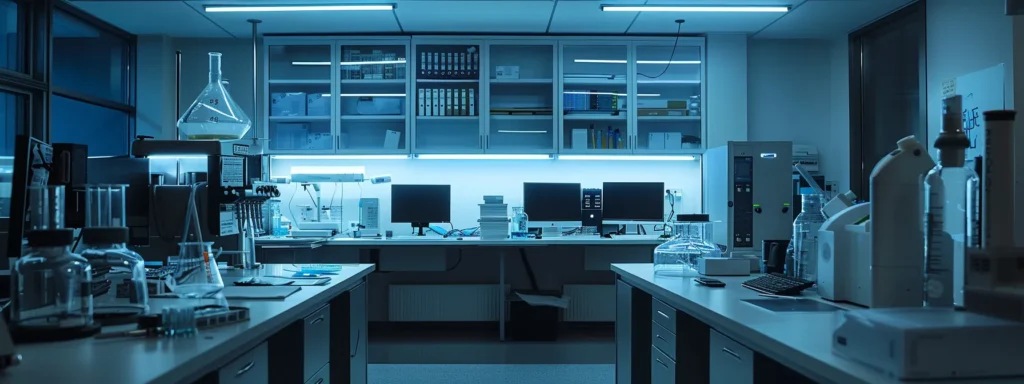Understanding the Software Testing Life Cycle (STLC) is crucial for ensuring quality throughout the software development process. Many teams struggle to maintain effective requirements traceability and documentation, which can lead to costly errors. This guide will cover the detailed phases of the STLC, entry and exit criteria, and how to integrate automation effectively. By engaging with this content, readers will learn proven methodologies to enhance their testing processes, ultimately improving product quality and efficiency. This resource aims to address these common challenges, equipping teams with tools to create a more streamlined STLC.
Introduction to the Software Testing Life Cycle (STLC)

The Software Testing Life Cycle (STLC) serves as a critical framework for ensuring quality in software development. It encompasses the purpose of research, the key components of system testing, and the integration of API testing within project management. Understanding these aspects highlights the essential role STLC plays in refining software interfaces and delivering reliable products.
Understanding the Purpose of STLC
The Software Testing Life Cycle (STLC) is designed to enhance the quality of software through systematic processes that ensure software design meets user requirements effectively. By focusing on crucial aspects like test execution and usability testing, STLC allows teams to identify potential issues early in the development cycle, particularly concerning the user interface and system performance. This proactive approach not only saves time and resources but also contributes to delivering reliable software products that satisfy end-user expectations.
Key Components of the Testing Process
The key components of the testing process within the Software Testing Life Cycle (STLC) encompass various crucial activities that ensure thorough evaluation. Integration testing plays a vital role in verifying the interaction among different modules, enabling teams to identify issues related to behavior before deployment. Additionally, effective risk management strategies enable testers to assess potential pitfalls and prioritize testing efforts accordingly, while a traceability matrix helps maintain a clear connection between requirements and corresponding test cases, ensuring all aspects are adequately validated.
The Role of STLC in Software Development
The Software Testing Life Cycle (STLC) plays a significant role in software development by integrating seamlessly with various phases of the Software Development Life Cycle (SDLC). Outsourcing testing functions allows organizations to leverage specialized expertise for functional testing and usability evaluations, ensuring that products not only meet functional requirements but also provide a positive user experience. Additionally, establishing a robust testing infrastructure during the STLC contributes to risk mitigation and enhances overall software quality, which is essential for successful project completion and customer satisfaction.
Detailed Phases of the Software Testing Life Cycle

Detailed Phases of the Software Testing Life Cycle
The phases of the Software Testing Life Cycle (STLC) encompass critical activities essential for achieving customer satisfaction. This section will explain the requirement analysis phase, guide the creation of an effective test plan, and describe how to develop test cases and scenarios. It will also cover setting up the test environment, executing tests, and closing the test cycle through detailed reporting, ensuring comprehensive testing aligned with SDLC phases in testing.
Requirement Analysis Phase Explained
The Requirement Analysis phase is a foundational step in the Software Testing Life Cycle that focuses on gathering and understanding the application’s functional requirements. This phase involves evaluating the software architecture to ensure all functions and features are clearly defined, which sets the stage for effective test automation and enhances overall accessibility. By addressing these key aspects, teams can identify potential gaps or issues early, leading to a more streamlined testing process that aligns with user expectations and improves the final product’s quality.
Crafting an Effective Test Plan
Crafting an effective test plan is essential in the Software Testing Life Cycle as it aligns with the various testing stages in SDLC. A comprehensive test plan incorporates quality assurance parameters that outline the scope and objectives of the testing efforts. By clearly defining the software requirements and identifying the appropriate approaches for manual testing, teams can enhance their testing strategy, ultimately leading to improved software quality and user satisfaction.
Developing Test Cases and Test Scenarios
Developing test cases and test scenarios is a pivotal phase within the Software Testing Life Cycle, focusing on identifying vulnerabilities in a computer program. This process involves a thorough risk assessment that highlights potential areas of concern, allowing teams to prioritize their testing efforts effectively. By crafting detailed test cases and scenarios, organizations can enhance their productivity, ensuring the software meets user requirements while minimizing the risk of defects in the final product.
Setting Up the Test Environment
Setting up the test environment is a crucial step in the Software Testing Life Cycle (STLC) that ensures all necessary resources are in place for effective testing. In a scrum framework, teams can benefit from establishing a well-defined environment conducive to both exploratory testing and automated test design, which enhances the efficiency of the testing process. By utilizing the right tools and configurations, organizations can streamline their workflow, allowing for quicker detection of issues and ultimately leading to higher software quality.
Executing Tests and Recording Results
Executing tests and recording results is a critical phase in the Software Testing Life Cycle, following the meticulous requirements analysis. During this sequence, testers align their efforts with the specifications outlined in the requirements document, ensuring that each test case fulfills the client‘s expectations. Acceptance testing is particularly vital at this stage, as it assesses whether the software meets user experience standards and is ready for deployment, highlighting any discrepancies that may need resolution before moving forward.
Closing the Test Cycle and Reporting
Closing the test cycle and reporting are essential steps in the Software Testing Life Cycle that ensure the organization can assess the overall software quality comprehensively. This phase involves documenting the testing outcomes, including defects identified on the server and insights gained during the process. By consolidating knowledge from testing activities, teams can provide valuable feedback that informs future software development efforts, enhancing overall effectiveness and user satisfaction.
Entry and Exit Criteria in Each STLC Phase

Defining clear entry criteria is essential for setting up a robust test environment, ensuring readiness for the next phase of the Software Testing Life Cycle (STLC). Establishing exit criteria for quality assurance guarantees that all deliverables meet user expectations and are aligned with the SDLC testing phase. Understanding these criteria impacts testing outcomes significantly, facilitating a structured approach to software evaluation that enhances overall quality.
Defining Clear Entry Criteria
Defining clear entry criteria is a fundamental aspect of the software testing process, ensuring that the team is fully prepared before initiating testing activities. These criteria typically include the completion of necessary documentation and a thorough verification and validation process to confirm that the software meets specified requirements. Effective entry criteria also encompass preliminary reviews, such as smoke testing, to identify critical issues within the database and verify that the system is stable enough to proceed, thereby enhancing quality control and reducing the likelihood of defects in later stages.
Establishing Exit Criteria for Quality Assurance
Establishing exit criteria for quality assurance in the Software Testing Life Cycle (STLC) is vital to ensure that testing meets the defined scope before project completion. These criteria typically involve creating a comprehensive checklist that outlines the specific conditions that must be met, such as successful execution of all critical test cases and validation from the business analyst regarding user requirements. In a waterfall model, adhering to these exit criteria helps teams confirm that the software is ready for deployment, significantly reducing the chances of post-launch defects and enhancing overall project success.
The Impact of Criteria on Testing Outcomes
The impact of defining clear entry and exit criteria on testing outcomes is significant in the software development process. These criteria ensure a structured evaluation of each STLC phase, guiding teams in maintaining an efficient workflow. By adhering to specifications that determine readiness for testing or completion of the testing phase, organizations reduce risks associated with the spiral model, leading to higher quality software and minimizing defects post-launch.
Enhancing the STLC Process

Best practices for efficient testing are essential to enhance the Software Testing Life Cycle (STLC) process. This section will address common challenges and provide strategies to overcome them, focusing on the importance of regression testing and implementation. It will also examine how leveraging tools and technologies can streamline automated software testing, ensuring stakeholder satisfaction and a positive end-user experience. Continuous improvement in testing practices will be emphasized, enhancing overall software quality.
Best Practices for Efficient Testing
Implementing best practices for efficient testing is essential for maximizing the effectiveness of the Software Testing Life Cycle (STLC). Continuous testing throughout the software testing phases ensures that requirements are consistently met, allowing teams to catch defects earlier in the development process. Moreover, maintaining traceability between requirements and test cases facilitates better alignment with project goals, ultimately enhancing quality in web development projects and leading to a more reliable end product.
Common Challenges and How to Overcome Them
One common challenge in the Software Testing Life Cycle (STLC) is ensuring efficiency amidst rapid changes, especially when integrating agile testing with DevOps practices. Teams often struggle to keep pace with frequent updates while maintaining quality and thorough evaluation. To address this challenge, organizations can adopt automated testing tools that support agile methodologies, which enable quicker feedback loops and enhance collaboration between development and testing. This approach not only streamlines the testing process but also ensures that quality remains a top priority throughout the lifecycle.
Leveraging Tools and Technologies
Leveraging tools and technologies is vital for optimizing the Software Testing Life Cycle (STLC) and driving efficiency in the testing process. Automated testing tools, such as Selenium or JUnit, allow teams to execute tests more quickly and consistently, significantly reducing manual testing efforts and enhancing overall accuracy. By utilizing these tools, organizations can streamline testing workflows, easily integrate continuous testing within agile environments, and promptly identify defects, ensuring that quality remains a priority throughout the development cycle.
Continuous Improvement in Testing
I apologize for the error in the last response. Let me try again. Continuous improvement in testing is essential for organizations aiming to enhance the Software Testing Life Cycle (STLC) process. By regularly reviewing testing methodologies and incorporating feedback from stakeholders, testing 7 teams can identify inefficiencies and implement more effective strategies. This approach not only helps in addressing common pain points, such as delays caused by inadequate test coverage, but also fosters a culture of quality that leads to higher software reliability and better user satisfaction.
Integrating Automation Into the STLC

Integrating automation into the Software Testing Life Cycle (STLC) offers significant benefits, including increased efficiency and accuracy in testing processes. This section will explore identifying processes suitable for automation, implementing automation across various testing phases, and the importance of maintaining automated test suites. Each of these topics will provide practical insights into enhancing software quality through effective test automation strategies.
Benefits of Test Automation
Test automation brings several advantages to the Software Testing Life Cycle (STLC), significantly enhancing the efficiency and reliability of testing processes. By automating repetitive and time-consuming test cases, teams can focus their efforts on more complex scenarios, reducing the risk of human error and accelerating the testing timeline. This streamlined approach not only improves accuracy but also allows for more frequent testing, which is essential in agile environments where rapid iterations are common, ultimately leading to higher software quality and increased customer satisfaction.
Identifying Processes Suitable for Automation
Identifying processes suitable for automation within the Software Testing Life Cycle (STLC) is essential for enhancing efficiency and effectiveness. Typically, repetitive and time-consuming tasks, such as regression testing or performance testing, are prime candidates for automation since they require consistent execution and are susceptible to human error. By focusing on these areas, organizations can reduce testing time and improve accuracy, allowing teams to allocate more resources to complex testing scenarios that require critical thinking and problem-solving skills.
Implementing Automation in Testing Phases
Implementing automation in testing phases within the Software Testing Life Cycle enhances efficiency and reduces human error. Teams can focus on automating repetitive tasks like regression and smoke testing, which are time-consuming yet crucial for maintaining software quality. For instance, using tools like Selenium allows organizations to execute automated test scripts swiftly, ensuring that frequent changes in the application do not compromise functionality while enabling faster feedback to developers, creating a more robust testing environment.
Maintaining Automated Test Suites
Maintaining automated test suites is crucial for ensuring ongoing software quality within the Software Testing Life Cycle (STLC). Regular updates to these suites are necessary to reflect changes in the application’s features and functionalities, ensuring that tests remain relevant and effective. For instance, incorporating version control in testing 7 suite management helps teams to easily track changes and quickly adapt to evolving project requirements, ultimately enhancing the reliability of the tests and facilitating smoother integrations in the development process.
Adapting STLC in Agile and DevOps Environments

Adapting the Software Testing Life Cycle (STLC) for Agile and DevOps environments requires a strategic adjustment of STLC phases to align with Agile methodologies, embracing flexibility and iterative processes. Incorporating continuous testing in DevOps enhances the speed and reliability of software delivery, while fostering collaboration between testing and development teams promotes more effective communication and resource utilization. Each of these aspects contributes to a more efficient and responsive testing framework, essential for modern software development.
Adjusting STLC Phases for Agile Methodologies
Adjusting the Software Testing Life Cycle (STLC) phases for Agile methodologies involves a shift towards a more iterative and collaborative approach to testing. Agile emphasizes continuous feedback and flexibility, requiring testing activities to align closely with development cycles, thus enabling testers to identify defects and deliver improvements rapidly. For instance, incorporating regular sprint reviews allows teams to obtain real-time insights from stakeholders, ensuring that testing is not only thorough but also aligned with user expectations throughout the development process.
Incorporating Continuous Testing in DevOps
Incorporating continuous testing into DevOps practices is pivotal for enhancing software quality and delivery speed. This approach enables teams to conduct real-time testing throughout the development cycle, ensuring that issues are identified and addressed promptly. For example, by integrating automated testing tools within CI/CD pipelines, organizations can facilitate immediate feedback loops, which allow developers to make iterative improvements based on test results and effectively reduce the risk of defects in the final product.
Collaboration Between Testing and Development Teams
Collaboration between testing and development teams is essential for ensuring software quality in Agile and DevOps environments. By fostering open communication and continuous feedback, teams can quickly address issues that arise during development, leading to more efficient problem-solving and enhanced product quality. For example, synchronized daily stand-ups can enable testers to share immediate insights on testing outcomes, ensuring developers stay informed about potential defects and areas needing improvement, ultimately facilitating a more streamlined software development life cycle.
Conclusion
The Software Testing Life Cycle (STLC) is essential in delivering high-quality software that meets user requirements and expectations. By following its structured phases—from requirement analysis to test execution and closure—organizations can effectively identify and mitigate potential defects early in the development process. Integrating automation and adapting STLC to Agile and DevOps environments further enhances testing efficiency and quality. Ultimately, a thorough understanding of STLC empowers teams to create reliable products, fostering customer satisfaction and ensuring successful project outcomes.